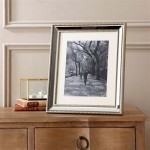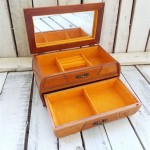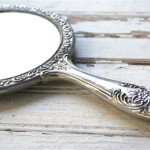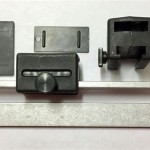Antique Mirror Resilvering
Antique mirrors possess a unique charm, reflecting a bygone era with their subtle imperfections and aged patina. However, the passage of time often takes its toll on the reflective backing, leading to deterioration and diminished clarity. Resilvering offers a way to restore these antique treasures to their former glory, revitalizing their reflective surfaces while preserving their historical character.
Mirror silvering, the process of applying a reflective coating to glass, has evolved significantly throughout history. Early mirrors utilized a mercury-based amalgam, a process that posed considerable health risks due to mercury's toxicity. This method was eventually replaced by the more benign process of silvering, which uses a solution of silver nitrate to deposit a thin layer of metallic silver onto the glass surface.
Resilvering an antique mirror involves carefully removing the deteriorated backing and applying a new reflective coating. This intricate process requires specialized skills and knowledge to avoid damaging the often fragile antique glass. Understanding the different types of antique mirror backings is crucial for successful resilvering.
Historically, several different backing materials have been used in mirror production. Mercury amalgam, as mentioned, was an early technique. Later, silvering became the dominant method, sometimes protected by a shellac or varnish coating. Identifying the original backing type is essential for proper resilvering preparation, as each material requires a specific removal method.
The resilvering process typically begins with carefully removing the existing deteriorated backing. This often involves delicate scraping and the application of specialized cleaning solutions. It is a crucial stage, as any damage to the antique glass during this process can be irreversible. Given the fragility of antique glass, professional expertise is highly recommended for this step.
Once the old backing is removed, the glass surface must be thoroughly cleaned and prepared for the new silvering. This involves removing any remaining residue or contaminants that could compromise the adhesion of the new reflective coating. The cleaning process requires meticulous attention to detail and the use of appropriate cleaning agents to avoid damaging the glass.
After the glass is thoroughly cleaned and dried, the new silvering solution is applied. This solution typically contains silver nitrate, a reducing agent, and other chemicals that facilitate the deposition of a thin, uniform layer of metallic silver onto the glass surface. The precise composition and application method of the silvering solution can vary depending on the desired finish and the specific characteristics of the antique mirror.
Following the application of the silvering solution, a protective coating is applied to seal and protect the newly silvered surface. This coating helps to prevent oxidation and other forms of deterioration, ensuring the longevity of the restored mirror. Traditional protective coatings often included shellac or varnish, while modern techniques may utilize more durable and protective materials.
Resilvering an antique mirror is a specialized process that requires a significant investment of time and expertise. The delicate nature of antique glass and the complexity of the resilvering process necessitate the skills of a trained professional. Attempting to resilver an antique mirror without proper training and equipment can result in irreversible damage to the mirror.
When selecting a professional for antique mirror resilvering, it's essential to consider their experience, expertise, and understanding of historical mirror construction techniques. A qualified professional will be able to assess the condition of the mirror, identify the original backing material, and employ the appropriate resilvering methods to restore the mirror to its original beauty while preserving its historic integrity.
The cost of antique mirror resilvering can vary depending on several factors, including the size of the mirror, the complexity of the restoration, and the experience level of the professional. While cost is a consideration, prioritizing the expertise and experience of the restorer is paramount to ensure a successful and historically sensitive restoration.
Proper care and maintenance are essential to preserve the newly resilvered antique mirror. Avoiding harsh cleaning chemicals, excessive moisture, and direct sunlight will help maintain the integrity of the reflective surface and protect the mirror from future deterioration. Regular dusting with a soft cloth is typically sufficient to keep the mirror clean and shining.
Resilvering offers a valuable means of preserving and revitalizing antique mirrors, allowing these historical artifacts to continue reflecting their beauty and history for generations to come. By entrusting the restoration process to skilled professionals and practicing proper care and maintenance, antique mirror owners can ensure the long-term preservation of these treasured possessions.

Re Silvering Mirrors Doheny Mirror And Artistic Glass
Mirror Resilvering Frank Wright Glass

Mirror Resilvering And Silvering
Frank Wright Glass Services Mirror Resilvering

Is Your Looking Glass Showing Age Twin Cities Bungalow Club

Is Your Looking Glass Showing Age Twin Cities Bungalow Club

Fricks Glass And Mirrors Resilvering

Re Silvering Mirrors Doheny Mirror And Artistic Glass

Mirror Resilvering Service Nyc Brooklyn Philadelphia Queens

Common Mirror Resilvering Questions Bear Glass Blog








